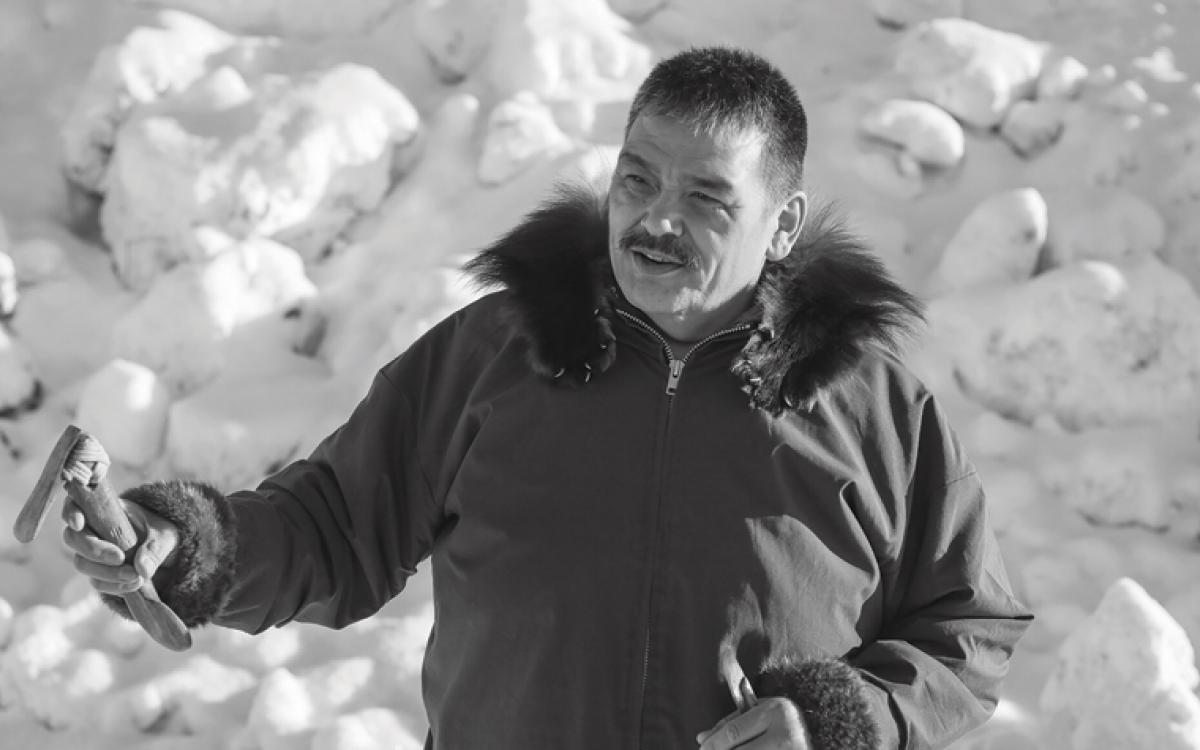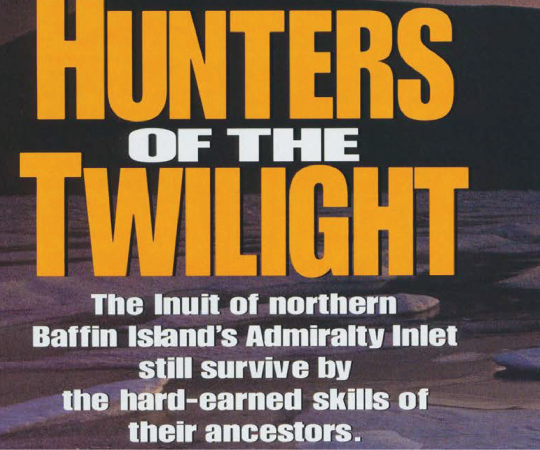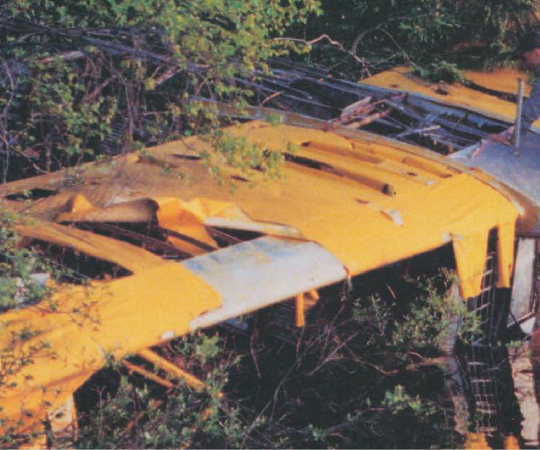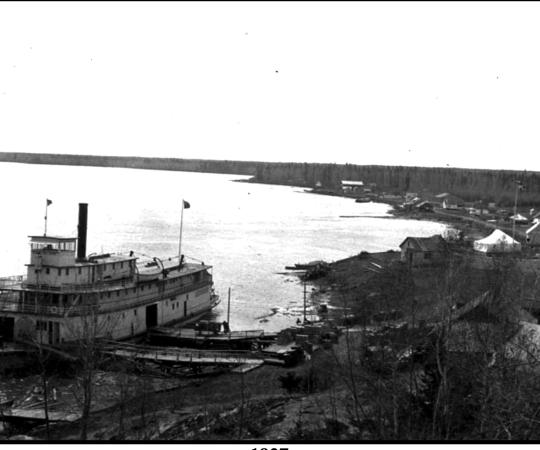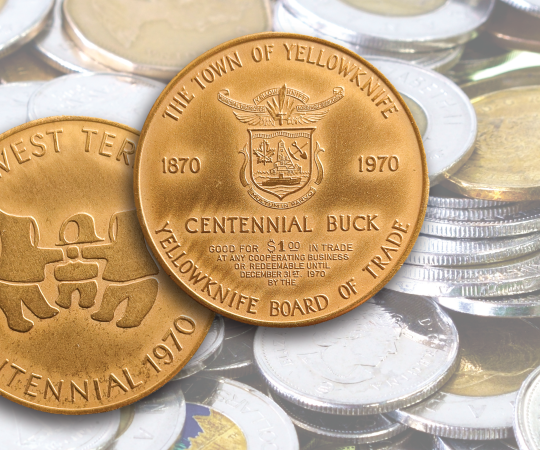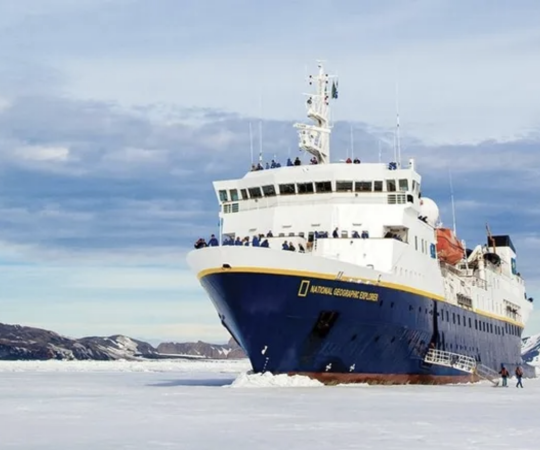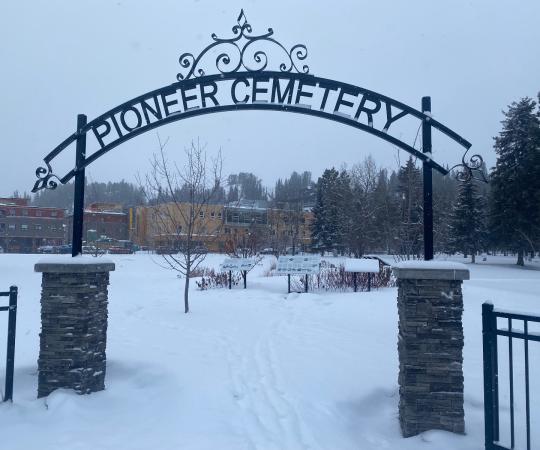More than 20 years ago, in a hamlet on the coast of the Beaufort Sea, the qajaq (kayak) almost disappeared. It had been nearly 100 years since the last one had been built with traditional tools from the land by the Inuvialuit of Tuktoyaktuk, and no one living had the complete set of skills to do so. Darrel Nasogaluak, now the mayor of Tuktoyaktuk, had spent his childhood learning from his grandfather how to construct traditional Inuvialuit tools like the harpoon, ulu and snow knife. But even his grandfather had not built a qajaq.
In the early '90s, Nasogaluak met archeologist Don Gardner, who told him of a Mackenzie Delta qajaq in the Museum of Civilization in Ottawa. With his grandfather’s traditional tool-making skills in mind, and a model to work off, Nasogaluak learned to construct the driftwood qajaq frame used by his ancestors. But there was one technique that eluded him—the skin coverings. Inuvialuit use seal skin to cover the qajaq, and women traditionally did the stitching. Sometimes they’d use caribou skin—a much thinner, and more difficult hide to work with. Needles needed to pass halfway through the hide—not completely—in order for it to be watertight. Although many Inuvialuit women still stitched clothing, the stitching to make a waterproof seal had long been forgotten. Or so it seemed.
Two women emerged, both in their twilight: Bessie Wolki, an elder from Tuktoyaktuk, remembered how to stitch sealskin coverings. Sarah Neyook, an elder from Aklavik, remembered how to do it with caribou skin. The Inuvialuit women who taught Nasogaluak how to stitch have since died, but the skills they passed on survive. Nasogaluak has constructed Mackenzie Delta qajait (kayaks) for the Glenbow Museum in Calgary and the Prince of Wales Museum in Yellowknife. There's also one hanging in the airport terminal of Tuktoyaktuk that he built with youth in the community.
Why is it important to teach youth how to use traditional tools and build qajait? I see a lot of people my age and younger that are really removed from our traditional way of life. They don’t spend as much time on the land. And the language is pretty much lost for everyone my age or younger. But being on the land, and using our tools and knowing what each one is for, I thought it was really important to try and continue it and encourage it.
I was always interested in tool-making because my grandfather, Edgar Kotokak, was a real traditional craftsman. And I learned quite a bit from him. But what was beyond his knowledge were qajait. In his youth he would play with them. From what I gather, his father may have constructed one of the last ones 100 years ago. So he’d seen them around, but by the time he was hunting as an adult they were out of use. He made all the other hunting gear except the qajaq. All the hand tools for carving, and working wood and bone, he made on his own.
What kind of tools did he make? He was a sled-maker, he made a lot of sleighs for a lot of people, and an ulu maker for almost every woman in the community. And harpoons. We’d make harpoons all summer for different hunters. And the neat thing about the way he taught me was when we worked on something, I never got any of them. I’d ask him, ‘Is this one for me?’ and he’d say ‘No.’ ‘Is this one for me?’ ‘No.’ Beautiful harpoons we’d make. I asked him, ‘You know, we made all of these harpoons, why can’t I have one of them?’ And he said, ‘You know what? Your uncles and your cousins that got these harpoons, they don’t know how to make them. Now you can make your own.’ That was part of his teaching technique.
Now you’re doing the same thing with youth. Now I carry that on.
Do you use traditional tools to make the qajait now? Yes. The tools that me and my grandfather had made.
Would qajait have traditionally been built with driftwood? Yes. That’s how we built them too. We had driftwood logs that we split and wedged apart. Other than driftwood we used willow. Because willow, once it dries, is really light and very strong. Much like bamboo.
We changed them a bit, depending on whether they were gonna get any use or not. The traditional ones were made to go fast, but they were really tippy, eh? They were really lean and long. So we didn’t want that, in case we used them for the youth. So we adjusted the design to be used by someone with little or no skill. But they looked the same. They’re safer to use, but they won’t perform like the originals!
There's so many varieties of qajait across the Arctic. What makes the Mackenzie Delta style special? Well, they were designed for hunting belugas so it had to be really sleek and very fast. And extremely lightweight. They were just barely over 20 pounds and they were 16 feet long. It would be hard for someone to build one with Kevlar today and meet those specs. They were designed just for beluga hunting. They were really designed for one thing.

Have you paddled in the qajait you’ve built? I haven’t paddled with the skin ones. But even when I was younger I built my own out of canvas and stick frames. So I’ve used qajait. But I haven’t tried one of these sleek long ones because you’d have to really practice a lot—probably in a really shallow place to be safe! It’s the race car of qajait.
I’ve been in a few tippy sea qajait, it’s very dicey. This is not like a sea qajaq. It’s very flat bottomed, and it drafts very little water, and is narrow. You practically put it on rather than get into it. From top to bottom it might be 10 inches deep. Extremely fast.
Why do you think the skills to make them were forgotten? When the qajait were used heavily we probably had a couple hundred hunters that would work together to herd whales together into the estuary and bring them into shallow water. They would stretch out along a long line and then drive whales into the estuary. And then when they got into really shallow water they’d go in and kill them. But after the big epidemics between the 1860s and the 1920s, so many of our people had died that we didn’t have the large group of people that you could muster up to do the drives anymore. We lost probably 75 percent or more of our population in a short period of time. So they started hunting whales a different way, and by then they had firearms, so you would approach a whale and use a gun.
So the hunting techniques had changed to make the qajaq obsolete, with the exception of just an open water, retrieval boat—not a hunting tool.
What kind of reactions do you get from youth when they see what goes into building a qajaq and experience it for themselves? Well, like all youth, they’re very excited in the beginning. ‘Oh we’re building a qajaq!’ But when they realize how much time, and how much work it is, they go, ‘Oh we’re going to be doing this for another six weeks?’ They’re so used to the modern pace where you go to the store and you buy something and you’re using it in an hour. We’re taking driftwood logs and we split them. And then we work them down into various parts of the qajaq, including willows, where we strip the bark off and create ribs because they’re very strong.
We had some very dedicated youth to work on sealskins. They’re not the easiest things to work with. After you have them in the house for a few days they start to smell, eh? But they worked hard at it. They sewed the skins, they cleaned the hair off the skins—it was one of the big problems, but I was really impressed.
The core group of the students that I worked with now are aware of how a qajaq is put together, and how waterproof seams are done.
The skills are being passed on, and maybe a bit of the patience as well. Yes. Like any youth they expected that you could go in and, at the end of the day, something would look like a qajaq, but it took weeks.
How do you think the new highway to Tuk will affect traditional skills like qajait building? I don’t think it’s going to affect it very much. There’s been a real revival with youth for drum dancing. They’ve really revived the old drummers that are just passing. They were drumming in their 70s and 80s and the youth group just picked it up. So I’m hoping that they are looking back and they are getting proud of their heritage.
It seems like the qajaq-building would help with that as well. Yeah. When you’re doing it, you just see a few students that are taking part. But the entire community is proud of what the youth did with these qajait projects. It’s really good to see.
The way your grandfather taught you—not giving you the tools, having you make them for yourself—I'm wondering if there are any youth who you feel could do that now? I’ve been looking around for young guys to work with. There’s still some interest in this. The Inuvialuit teaching style is not really a classroom type of style, or an aggressive style. Somebody comes out of the woodwork and is interested and you just take him under your wing. It’s not really formal, it’s usually just somebody that shows interest.
I’m waiting for the right person to come along. But I don’t want to wait too long because there might not be anybody that’s interested. Or maybe they just don’t know. I talk to a lot of young people, and let them know that if they’d like to work with me I’m open to working with them.
You don’t want to force anyone to do it. Yes, but in the same sense I don’t want to wait too long, because I’d like to start teaching somebody everything I can soon.

